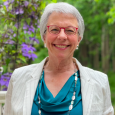How early do girls start imagining themselves as astronauts? For both Jessica Meir and Christina Koch it was age 5. Meir still remembers her first grade teacher having the students draw their dream job—Meir drew herself wearing a spacesuit. Koch recalls, “No one told me I couldn’t do it. And so that dream kept right on growing and growing.” Meir grew up to become a marine biologist and Koch an electrical engineer. Then together, both on their first spaceflights, they made history as NASA astronauts completing the first all-woman spacewalk on October 18, 2019.
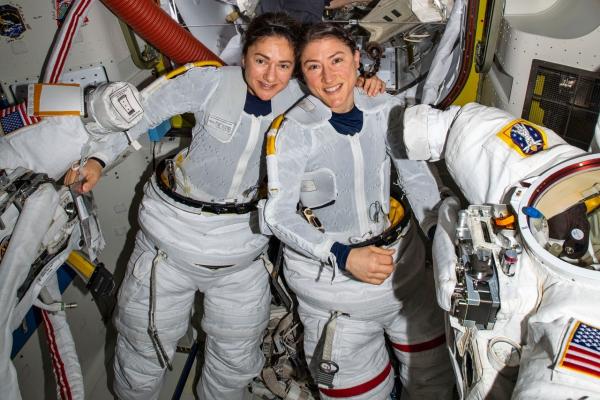
Before they faced the extreme challenge of spacewalking outside the International Space Station (ISS), together, Koch and Meir had to overcome a unique challenge inside the station. They each needed a spacesuit with a medium sized, hard torso (upper body), but the size range of spacesuit components onboard would only fit one of them. Most spacesuit pieces have been built for larger men astronauts, and wearing an oversized spacesuit could make an EVA (extravehicular activity) harder and more dangerous. So NASA ended up shipping another medium torso piece to the ISS on a cargo spaceship flight.
When the day came to “don” their spacesuits, and finally they floated as a team outside the ISS, the two women felt the historic weight of their experience. Koch says, “We caught each other’s eye and we knew that we were really honored with this opportunity to inspire so many, and just hearing our voices talk to Mission Control, knowing two female voices had never been on the loops, solving those problems together outside—it was a really special feeling.”
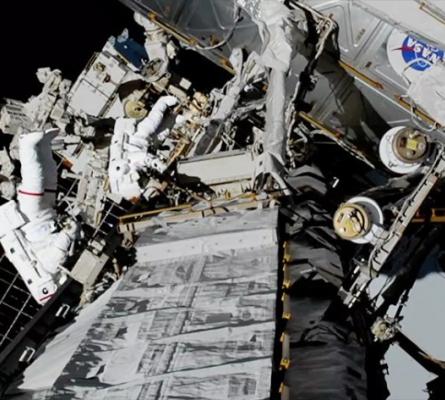
This year, November 2nd marks the 20th anniversary of women and men astronauts living and working on the International Space Station. While orbiting about 250 miles above our planet, astronauts from many countries have carried out thousands of experiments designed by both STEM experts and students. Cancer biologist Kate Rubins, who is on the space station right now, first imagined herself as an astronaut during a stargazing party around age 5 or 6. Today she works with other astronauts on the ISS, and scientists and engineers on Earth, to make scientific discoveries about how the human body changes in space, as humans spend longer and longer periods in microgravity away from Earth.
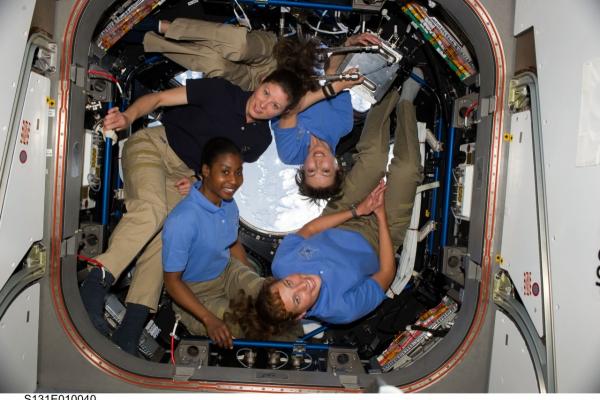
One change is that after astronauts adjust to being in space, they don’t feel any different being right-side up or upside down. And floating gradually becomes they way they naturally move, whether they’re busy working or having fun. For example, kicking a soft soccer ball on the space station can easily involve a floating mid-air somersault. “Floating brings out the five-year-old in everybody,” says Meir.
Gazing down at Earth from the station changes astronauts too, in how they think about our planet. Astronauts have a panoramic view of Earth and space through the ISS cupola’s seven windows (six trapezoids surrounding one circle which is the largest window in space). As the space station flies at about 17,500 miles per hour, astronauts can see 16 sunrises and sunsets in every 24 hours. “The planet just glows,” says astronaut Nicole Stott. She described it this way to her seven-year-old son: “Just take a lightbulb—the brightest lightbulb that you could ever possibly imagine—and paint it all the colors that you know Earth to be, and turn it on and be blinded.”
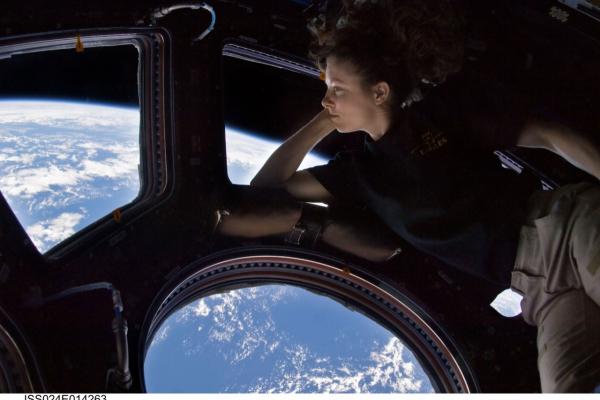
Astronauts on the ISS observe the peaceful flow of Earth’s rivers and the vast expanses of forests, deserts and ocean. They also watch and photograph powerful Earth processes like massive hurricanes swirling, and volcanoes and forest fires spewing smoke and ash that can travel halfway around the globe. For both women and men astronauts, what they see from space has a huge, personal impact, moving them to share their heightened sense of Earth and discovery with a new generation of space dreamers. “If I can inspire a child to do something—to look at the world a little bit differently, to delve into a scientific question—anything that sparks their imagination, then that is an honor,” says Meir.
Kids of all ages can imagine themselves as astronauts on the International Space Station, whether they’re at school or home. To see what astronauts see, visit the Windows on Earth website (www.windowsonearth.org) and explore spectacular photos taken by ISS astronauts, curated by TERC in collaboration with the ISS National Lab’s Space Station Explorers. To communicate the way astronauts communicate, write an astronaut letter or make an astronaut video about what it’s like living and working on the station. And to eat like astronauts eat, throw a space station pizza party in celebration of ISS astronauts’ 20th anniversary, or any time—using tortillas for personal pizza crusts. (Tortillas don’t shed crumbs that could float away and clog any space station equipment.) For dessert, maybe bake chocolate chip cookies, to replicate the first test cookies baked in space on the ISS. Just like on Earth, chocolate chip cookies baked in space smell delicious! But in space they can take about two hours to bake, instead of less than 20 minutes on Earth.
One year ago, on October 18th, 2019, International Space Station (ISS) astronauts Christina Koch and Jessica Meir of NASA floated into women’s history and space history as the first all-woman spacewalk team. On November 2nd, NASA will celebrate the 20th anniversary of all astronauts, women and men, who have lived and worked on the station. NASA STEM Engagement and the ISS National Lab are helping extend the celebration throughout the 2020-2021 academic year, with lots of K-12 STEM activities.
